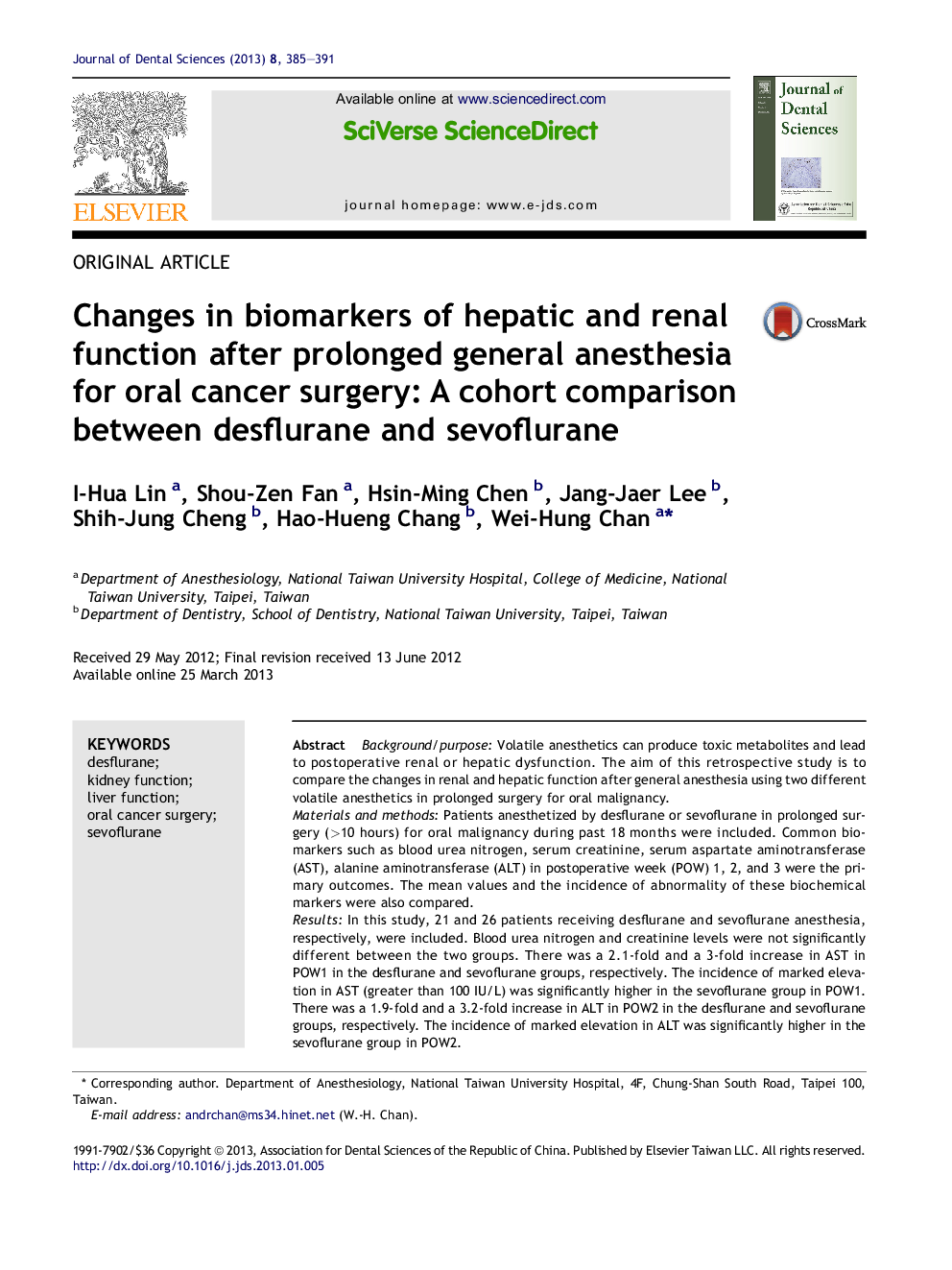| کد مقاله | کد نشریه | سال انتشار | مقاله انگلیسی | نسخه تمام متن |
|---|---|---|---|---|
| 3144600 | 1196973 | 2013 | 7 صفحه PDF | دانلود رایگان |

Background/purposeVolatile anesthetics can produce toxic metabolites and lead to postoperative renal or hepatic dysfunction. The aim of this retrospective study is to compare the changes in renal and hepatic function after general anesthesia using two different volatile anesthetics in prolonged surgery for oral malignancy.Materials and methodsPatients anesthetized by desflurane or sevoflurane in prolonged surgery (>10 hours) for oral malignancy during past 18 months were included. Common biomarkers such as blood urea nitrogen, serum creatinine, serum aspartate aminotransferase (AST), alanine aminotransferase (ALT) in postoperative week (POW) 1, 2, and 3 were the primary outcomes. The mean values and the incidence of abnormality of these biochemical markers were also compared.ResultsIn this study, 21 and 26 patients receiving desflurane and sevoflurane anesthesia, respectively, were included. Blood urea nitrogen and creatinine levels were not significantly different between the two groups. There was a 2.1-fold and a 3-fold increase in AST in POW1 in the desflurane and sevoflurane groups, respectively. The incidence of marked elevation in AST (greater than 100 IU/L) was significantly higher in the sevoflurane group in POW1. There was a 1.9-fold and a 3.2-fold increase in ALT in POW2 in the desflurane and sevoflurane groups, respectively. The incidence of marked elevation in ALT was significantly higher in the sevoflurane group in POW2.ConclusionBoth desflurane and sevoflurane did not cause clinically significant nephrotoxicity but produced a transient deterioration in liver function after prolonged anesthesia for oral cancer surgery. Sevoflurane was associated with a more severe degree of liver damage than desflurane in this study.
Journal: Journal of Dental Sciences - Volume 8, Issue 4, December 2013, Pages 385–391